Abstract
Three pigeons received visual discrimination training under both multiple variable-ratio extinction and variable-interval extinction schedules. All birds developed nearly perfect discrimination. When punishment for every tenth response during food reinforcement was presented, responding decreased as shock intensity increased. At the same time, responding during extinction, which was not punished, increased at intermediate punishment intensities, but returned to low levels under severe punishment. A second procedure, in which punishment and no-punishment sessions alternated unsystematically, was employed with two of the birds. The results under this procedure essentially replicated the data obtained as punishment shock intensity increased gradually.
Full text
PDF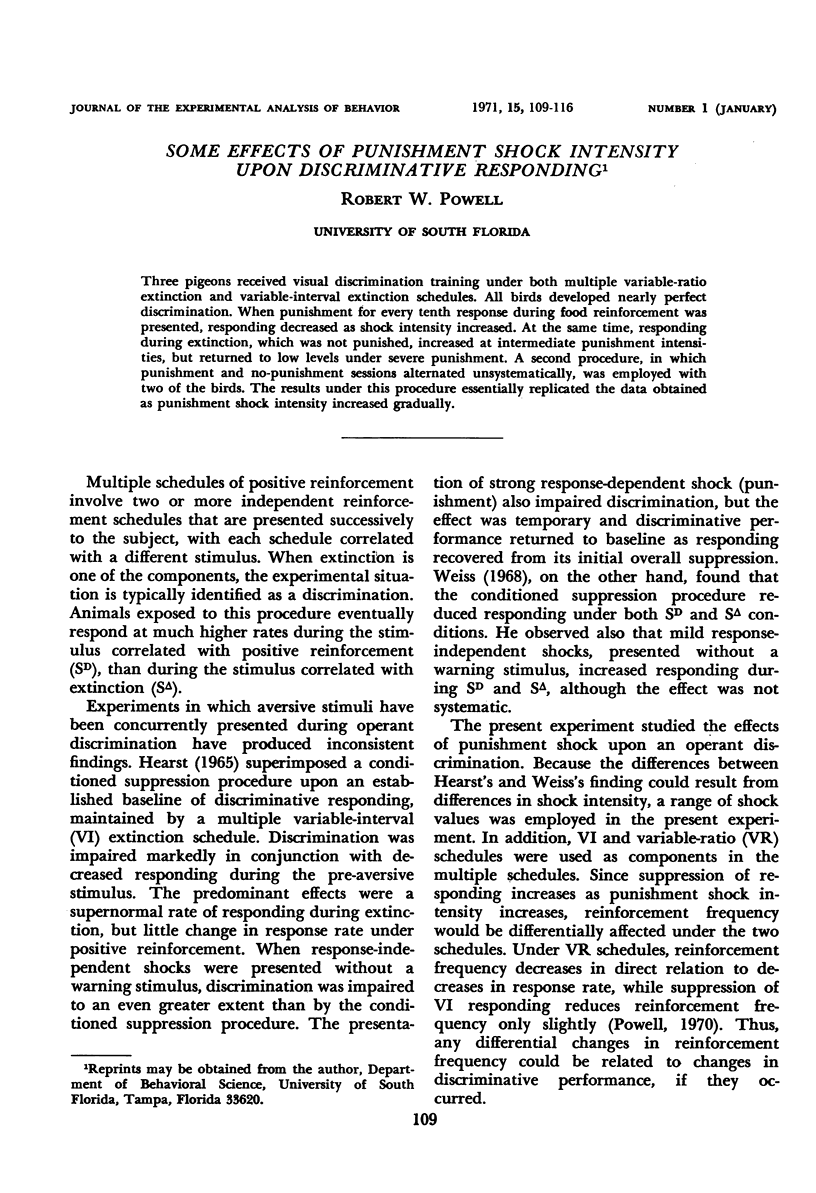
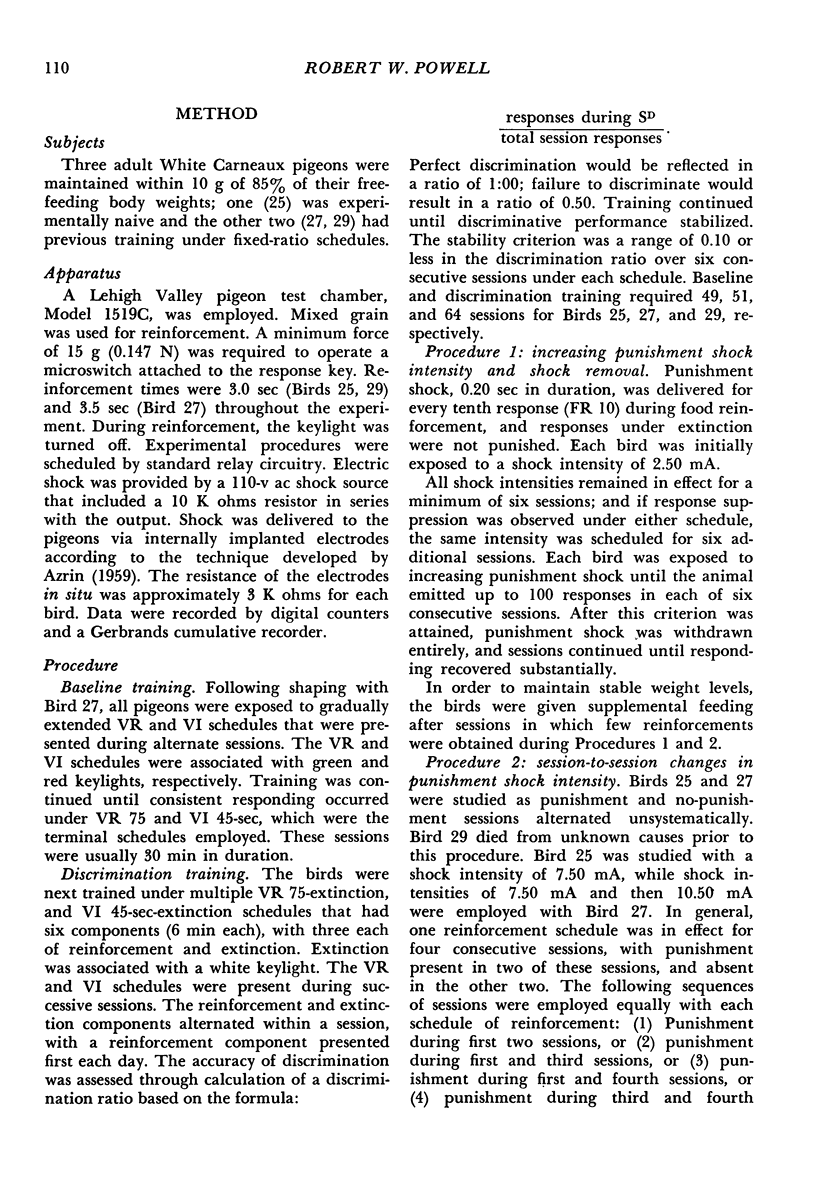
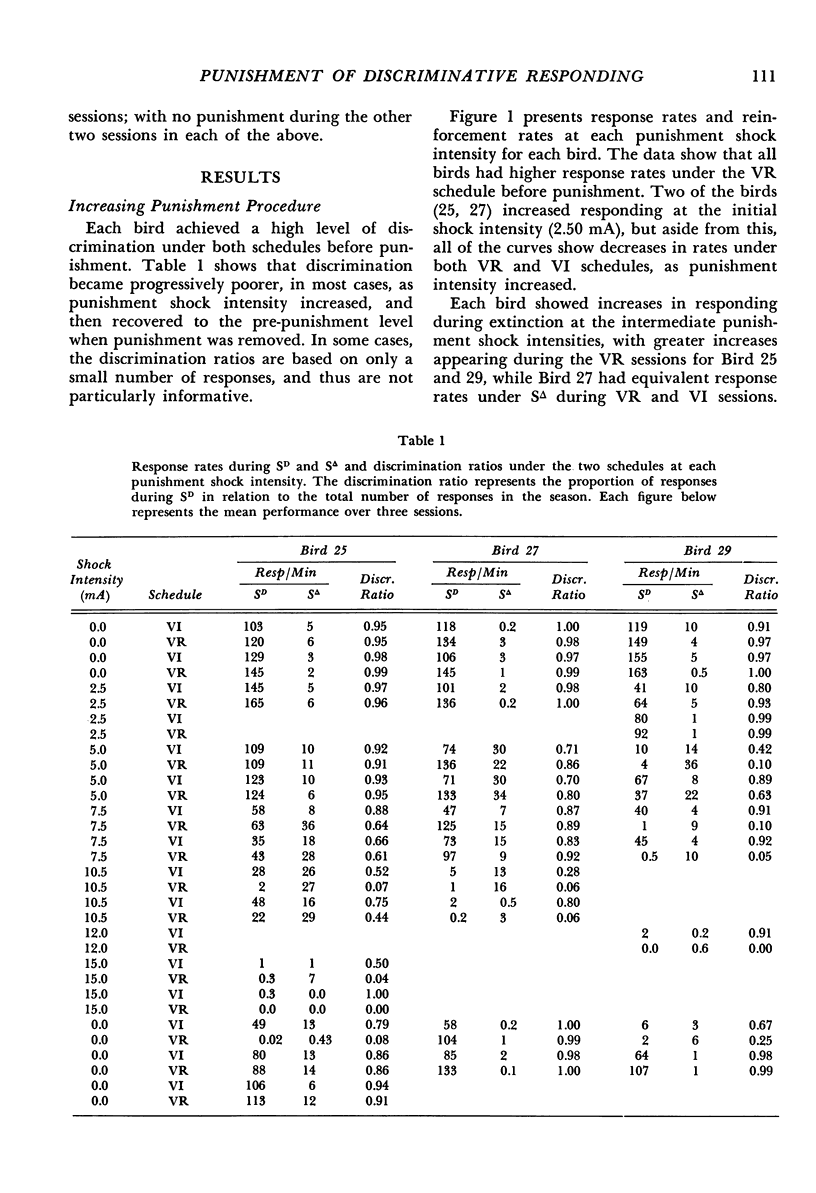
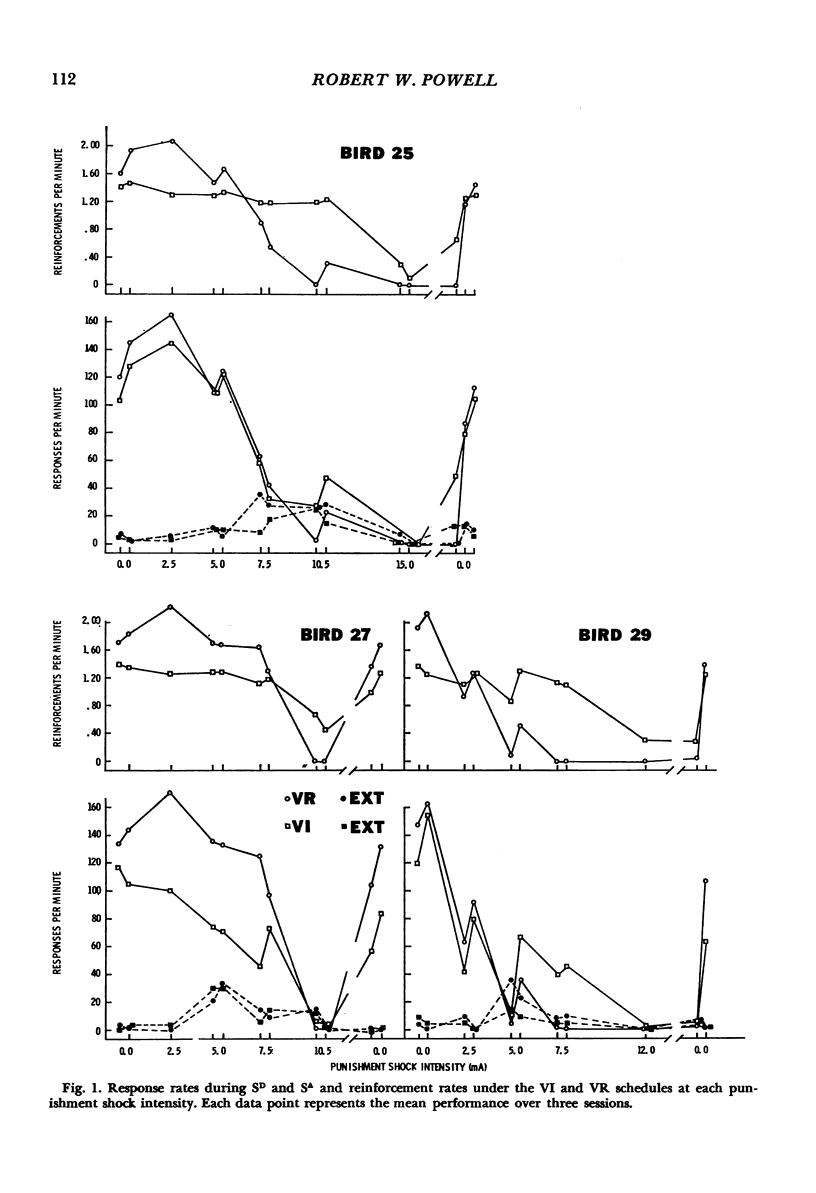

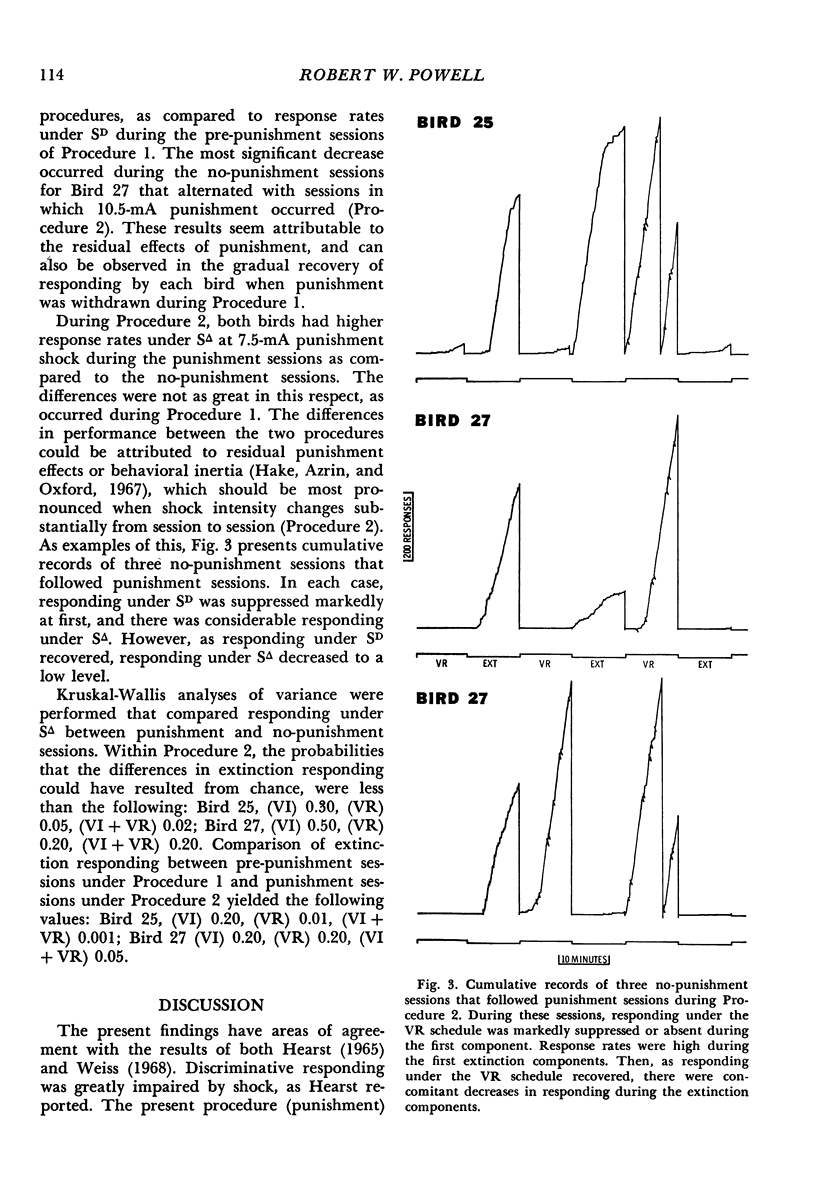

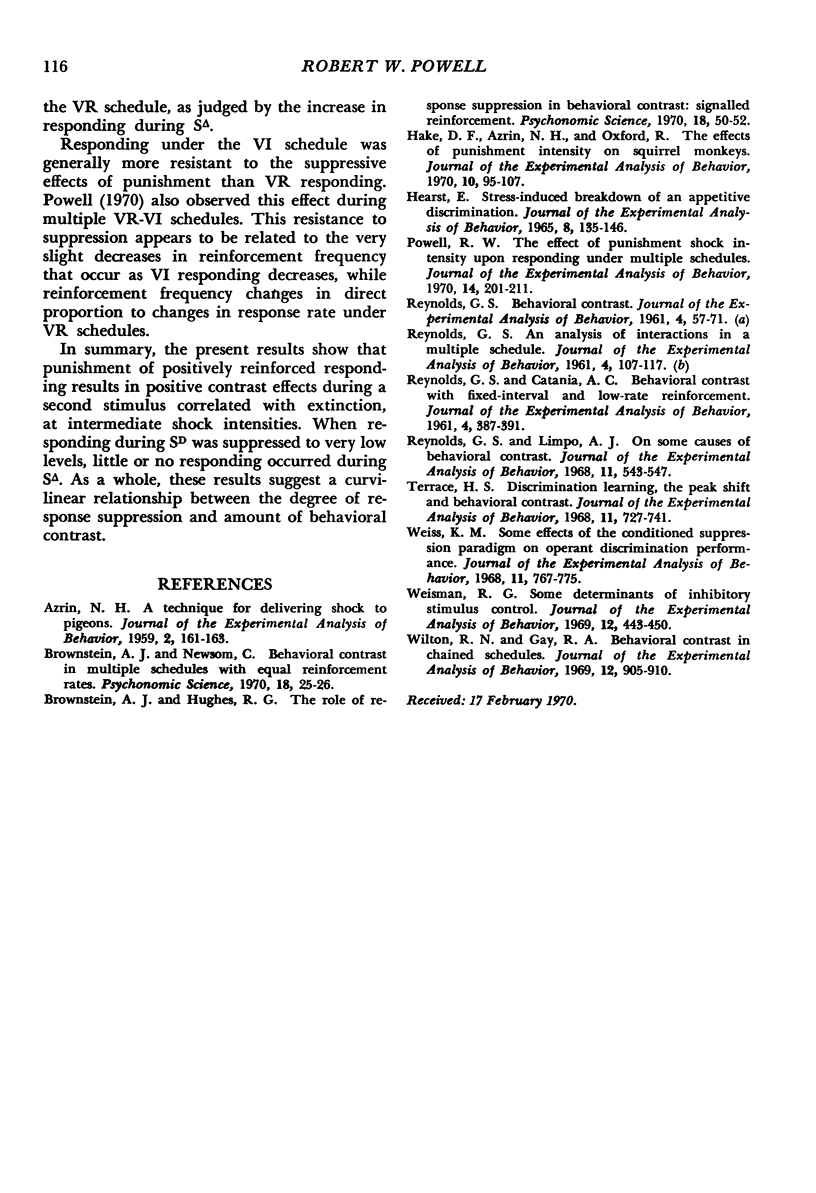
Selected References
These references are in PubMed. This may not be the complete list of references from this article.
- AZRIN N. H. A technique for delivering shock to pigeons. J Exp Anal Behav. 1959 Apr;2:161–163. doi: 10.1901/jeab.1959.2-161. [DOI] [PMC free article] [PubMed] [Google Scholar]
- HEARST E. STRESS-INDUCED BREAKDOWN OF AN APPETITIVE DISCRIMINATION. J Exp Anal Behav. 1965 May;8:135–146. doi: 10.1901/jeab.1965.8-135. [DOI] [PMC free article] [PubMed] [Google Scholar]
- Hake D. F., Azrin N. H., Oxford R. The effects of punishment intensity on squirrel monkeys. J Exp Anal Behav. 1967 Jan;10(1):95–107. doi: 10.1901/jeab.1967.10-95. [DOI] [PMC free article] [PubMed] [Google Scholar]
- Powell R. W. The effect of punishment shock intensity upon responding under multiple schedules. J Exp Anal Behav. 1970 Sep;14(2):201–211. doi: 10.1901/jeab.1970.14-201. [DOI] [PMC free article] [PubMed] [Google Scholar]
- REYNOLDS G. S. Behavioral contrast. J Exp Anal Behav. 1961 Jan;4:57–71. doi: 10.1901/jeab.1961.4-57. [DOI] [PMC free article] [PubMed] [Google Scholar]
- REYNOLDS G. S., CATANIA A. C. Behavioral contrast with fixed interval and low-rate reinforcement. J Exp Anal Behav. 1961 Oct;4:387–391. doi: 10.1901/jeab.1961.4-387. [DOI] [PMC free article] [PubMed] [Google Scholar]
- Reynolds G. S. An analysis of interactions in a multiple schedule. J Exp Anal Behav. 1961 Apr;4(2):107–117. doi: 10.1901/jeab.1961.4-107. [DOI] [PMC free article] [PubMed] [Google Scholar]
- Reynolds G. S., Limpo A. J. On some causes of behavioral contrast. J Exp Anal Behav. 1968 Sep;11(5):543–547. doi: 10.1901/jeab.1968.11-543. [DOI] [PMC free article] [PubMed] [Google Scholar]
- Terrace H. S. Discrimination learning, the peak shift, and behavioral contrast. J Exp Anal Behav. 1968 Nov;11(6):727–741. doi: 10.1901/jeab.1968.11-727. [DOI] [PMC free article] [PubMed] [Google Scholar]
- Weisman R. G. Some determinants of inhibitory stimulus control. J Exp Anal Behav. 1969 May;12(3):443–450. doi: 10.1901/jeab.1969.12-443. [DOI] [PMC free article] [PubMed] [Google Scholar]
- Weiss K. M. Some effects of the conditioned suppression paradigm on operant discrimination performance. J Exp Anal Behav. 1968 Nov;11(6):767–775. doi: 10.1901/jeab.1968.11-767. [DOI] [PMC free article] [PubMed] [Google Scholar]
- Wilton R. N., Gay R. A. Behavioral contrast in chained schedules. J Exp Anal Behav. 1969 Nov;12(6):905–910. doi: 10.1901/jeab.1969.12-905. [DOI] [PMC free article] [PubMed] [Google Scholar]


